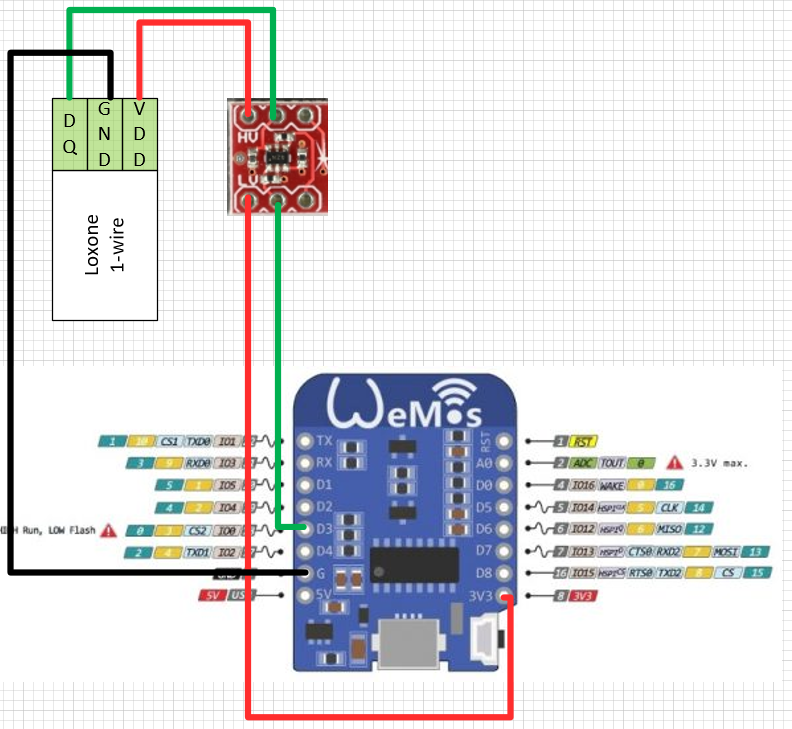I followed the steps in the README and set up an emulated DS18B20 which works, even more than 8 hours in line. After that I was even able to stabilise the communication so that my master was able to find DS2438. I was able to get data from the emulated DS2438 once, but after that my master isn't able to get further data. The DS2438 remains discoverable, but doesn't return any data. I tested this with an interval of 30 seconds between each read cycle. Do you have a hint what I could try else?
I tried to emulate a DS2438 on a Wemos D1 and find the "sensor" with Loxone. The Wemos D1 has only 3,3V pins so I used a level shifter to rise the signal to 5V. But it couldn't be found.
My wiring scheme is this:
My current code is this
Is this correct or am I missing something?